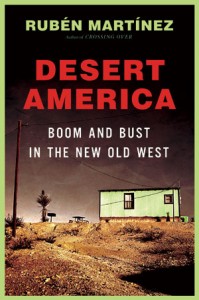To join or not to join — a grand L.A. Unified experiment in dual-language immersion.
Los Angeles Times, April 24, 2011
When I first held my daughter Ruby in my arms, I whispered to her, “Soy tu papá,” and a few minutes later when I held her twin sister, Lucía, I said the same thing. Then I melted into tears of joy, of course.
Before the twins were born, my wife, Angela, and I had decided we would do what we could to help them grow up bilingual. Acting on the instructions of my colleague Rebeca Acevedo, a linguist and professor of Spanish at Loyola Marymount University, I was to speak to them 100% of the time in Spanish, my first language, and Angela in English.
Ruby and Lucía began responding in English to my Spanish, which made it harder for me to stick to the soft-voweled tongue. Spanish was relegated to storytelling at bedtime with the trove of books I stocked up on to aid me in my increasingly quixotic language quest.
I want my children to be bilingual so they can cross the border between the United States and the vast Spanish-speaking world south of it, and also so they can cross the linguistic lines in our own city. And there is a personal, almost ineffable reason: I want to speak in Spanish with them because its sounds and rhythm and meaning run deep, like an underground river, in me. Not being able to share that with Ruby and Lucía would mean losing not just a connection with them but part of myself too.
These thoughts weren’t much on our minds when we moved to Mount Washington, a neighborhood with a top-ranked elementary school at the top of the hill. But then we heard that Aldama Elementary School in neighboring Highland Park had recently inaugurated a dual-language immersion program. Maybe I’d finally get some backup for Spanish — and in a public school classroom, no less.
Programs like Aldama’s combine “English learners” with “English proficient” students. Half the day’s lessons are in English, and the other half in the so-called target language. The Los Angeles Unified School District has dual-language programs in Spanish, Korean and Mandarin, and they are increasingly popular; the average growth rate of four or five new programs each year has doubled this year.
I visited Aldama’s program recently and was amazed when I walked into the kindergarten classroom of teacher Angelina Sáenz. I attended elementary school at a time when English immersion for all students was seen as a pillar of the “melting pot” ideal. The Spanish I’d spoken at home with my parents was whisked away and even became a source of shame. Now, I heard nothing but Spanish in the classroom.
“¡Plantas aquí, plantas allá, plantas en todas partes!” Sáenz was saying in her big, precise teacher voice when I entered the room, leading the children in a call and response on basic botany vocabulary. When teaching, she never says a word in English — neither do her students. The class is a sea of brown faces, with a sprinkling of white ones. But Sáenz told me not to assume that all the brown kids were Spanish-speaking immigrants. Some were English learners, some bilingual, some barely beginning to learn Spanish. In the chorus of student voices, however, I didn’t hear distinct accents. The dual-language model seems to be shaping their tongues into one.
The impetus for Aldama’s program was partly a result of this change. The initial push didn’t come from working-class immigrant parents but from middle-class newcomers. Courtney Mykytyn, a local mother with a new doctorate in medical anthropology, led the charge for Aldama’s dual-language program. Mykytyn refers to herself and other middle-class, professional parents at the school as the “hummus people,” because that is what they bring to parent potlucks — in contrast to the Doritos or tamales others would bring.
“If I believe in my community, then my kids need to learn Spanish,” she tells me. Beyond that altruism, she also points to research studies that show bilingual and biliterate students displaying greater aptitude for music and science.
Establishing the program at Aldama took a lot of time and political effort, the kind of time that hummus people tend to have more of. But, Mykytyn says, eventually there was also buy-in from working-class families attracted by promises of higher achievement and cultural pride.

